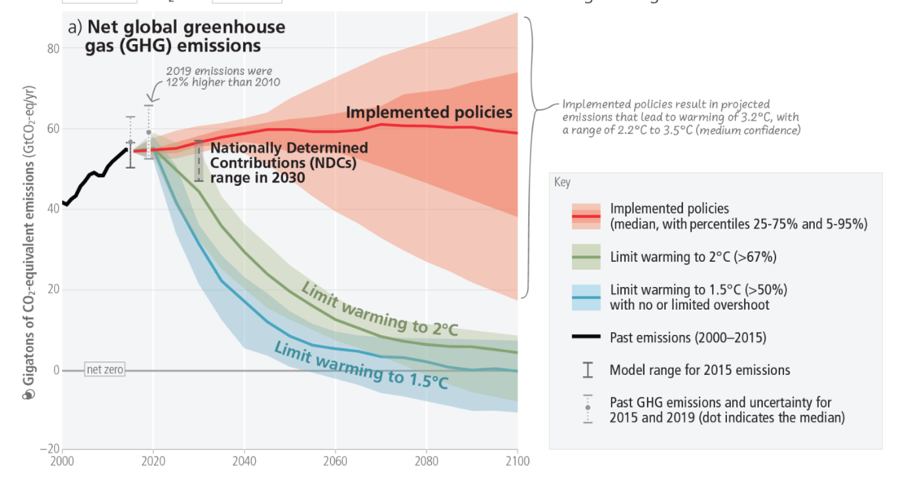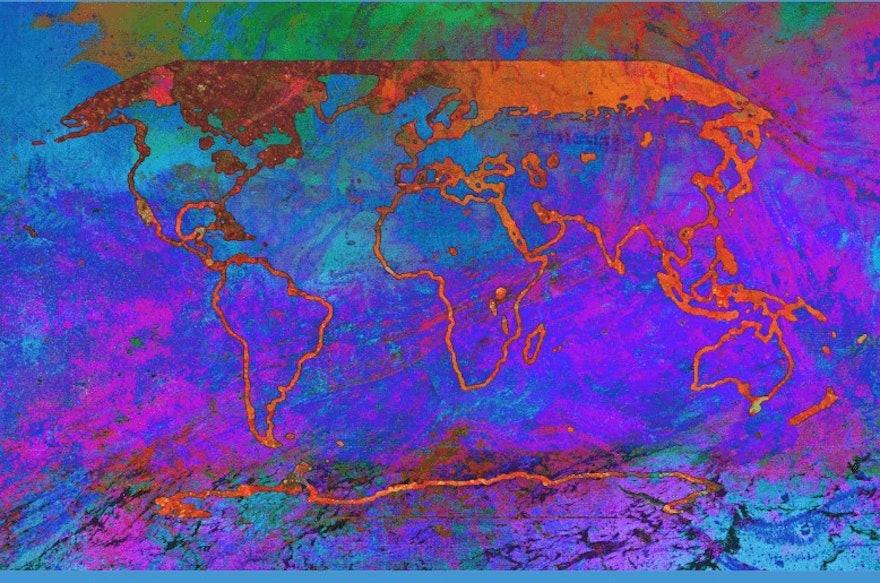IPCC released its Sixth Synthesis report AR6 on March 20th, 2023, for policymakers which summarizes the changes in the global temperature and its impact on the ecosystem. The Synthesis Report binds together the findings of six major reports published between 2018-2022. The message is univocal – Climate Change is already impacting the world and we should anticipate further negative repercussions if we do not reduce Greenhouse gas emissions by 50% BY 2030.
The key highlights of the report are listed below:
Human-caused global surface temperature increase from 1850–1900 to 2010– 2019 is 0.8°C–1.3°C, with a best estimate of 1.07°C. The majority of this temperature increase occurred between 1850 – 1989 (58%) and about 42% occurred between 1990 and 2019. The global average emissions stood around 6.9tCo2 per capita emissions, The 10% of households with the highest per capita emissions contribute 34–45% of global consumption-based household GHG emissions, while the bottom 50% contribute 13–15%.
Emissions need to be halved by the end of this decade,
If we take deep, rapid, and sustained action to mitigate and implement adaptation measures in this decade, we can lower the extent of future losses and damages that climate change may cause to both humans and ecosystems. As adaptation options often require significant implementation time, it is crucial to accelerate their implementation within this decade to bridge the gaps in adaptation. Delaying mitigation efforts will only intensify global warming, resulting in an increase in losses and damages, and more human and natural systems will reach their adaptation limits (with high certainty). Failing to act now poses challenges such as the risk of escalating costs, locking in infrastructure, stranding assets, and reducing the feasibility and effectiveness of adaptation and mitigation options.
Despite various adaptations and mitigation initiatives, the gap persists
In theory, there has been immense progress on the financing side but the financial flows are still not sufficient as the adaptation responses are fragmented and unequally distributed across different regions. There are widening disparities between the estimated cost of adaptation and the finance allocated to the adaptation. Adverse climate impacts will widen the financial gap, increasing the financial constraint, especially for the Least Developed Countries. 3x of the current investment is needed to limit warming to 2°C for 2020-2030, plus adaptation.

Global emissions pathways consistent with implemented policies and mitigation strategies.
Policies implementation and Climate Change are not going hand in hand
Although various mitigation activities like. Afforestation, CCS, Wetland Restorations, Waste management, renewable energy, etc. have increased substantially, but policies behind them and its coverage has been uneven. Policies implemented by the end of 2020 are projected to result in higher global GHG emissions in 2030 than emissions implied by NDCs, indicating an ‘implementation gap’. Public and private finance flows for fossil fuels are still greater than those for climate adaptation and mitigation. For example -The largest Oil and Gas companies recently report record profits in Q4 of 2022.
Carbon Budget
For every 1000GtCO2 emitted by human activity, global surface temperature rises from 0.27 degrees to 0.63 degrees. The remaining carbon budget from the beginning of 2020 is 500 GtCO2 for a 50% likelihood of limiting global warming to 1.5°C and 1150 GtCO2 for a 67% likelihood of limiting warming to 2°C.
Role Of CDR and CCS
CDR will be necessary to reach net zero. If warming exceeds 1.5°C, it could gradually be reduced again by achieving and sustaining net negative global CO2 emissions. This would require the additional deployment of CDR, leading to greater feasibility and sustainability concerns. The larger the overshoot, the more net negative CO2 emissions would be needed to return to 1.5°C by 2100.CCS is an option to reduce emissions from large-scale fossil-based energy and industry sources provided geological storage is available. When CO2 is captured directly from the atmosphere (DACCS), or from biomass (BECCS), CCS provides the storage component of these CDR methods.
Limiting warming to 1.5 and 2 Degrees involves rapid decarbonization
Under implemented policies scenario, emissions will peak post-2060 but to reach "limit warming to 2 degrees" emissions should have already peaked. Implemented policies result in projected emissions that lead to warming of 3.2 degrees which will have massive catastrophic impacts on the world. All pathways to net zero see land use as a sink or net zero. Conservation, restoration of forests, etc offer the largest share of economic mitigation potential, with reduced deforestation in tropical regions having the highest total mitigation potential.
Synopsis: There is still Hope
The IPCC Sixth Assessment presents climate science findings that are crucial for climate negotiations and decision-making at COP26 in Glasgow in November. The Assessment includes updated estimates on the likelihood of exceeding the 1.5°C global warming threshold in the coming decades, emphasizing the urgency of immediate and significant reductions in greenhouse gas emissions.
Policy-makers will have access to essential tools for creating sustained and effective reduction plans for carbon dioxide (CO2) and other greenhouse gas emissions, thanks to the Assessment and the new Atlas. While reducing emissions would lead to prompt improvements in air quality, it could take up to 30 years for global temperatures to stabilize. The IPCC Working Group I highlights that some climate phenomena, such as sea level rise, may become irreversible for hundreds to thousands of years.
Ultimately, the report emphasizes that human actions can still shape the course of climate change by reducing emissions to net zero. The IPCC underscores that there is still a slim opportunity to avoid a climate disaster and that it might be our final chance.

![[object Object]](/lib_ubcXiSgTRmkLVyyT/k8w528b9mk1p20to.png?w=400)
